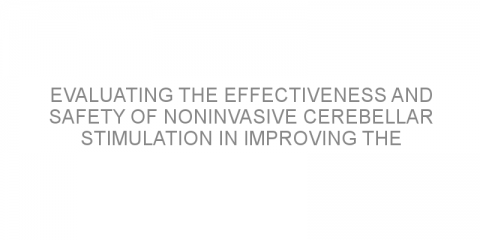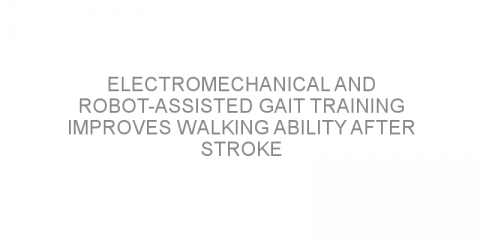In a nutshell This study evaluated the effectiveness and safety of noninvasive cerebellar stimulation (NICS) in improving the balance and walking function of patients with stroke. The data showed that NICS improved the balance and walking function in these patients. Some background A stroke is caused by a reduction in blood flow to the...
Read MoreNature of disability-Motor disability-Other motor disability Posts on Medivizor
Electromechanical and robot-assisted gait training improves walking ability after stroke
In a nutshell This study reviewed the effectiveness of electromechanical- and robot-assisted gait training (ERGT) in treating impaired gait (walking) after stroke. Researchers suggested that ERGT combined with physiotherapy improves the walking ability of these patients. Some background A stroke occurs in more than 795,000 patients in the US. It...
Read MoreUltrasound and radial extracorporeal shock wave therapies in the treatment of foot spasticity in patients with stroke
In a nutshell This study compared the effectiveness of ultrasound and radial extracorporeal shock wave therapy (RESWT) in the treatment of foot symptoms in patients with stroke. Researchers suggested that both treatments similarly improved these symptoms. Some background Spasticity is a common symptom in patients with stroke. It is seen in up...
Read MoreVisual cues are safe and feasible to include in post stroke walking rehabilitation
In a nutshell This trial assessed whether it was safe to include visual cue training (VCT) in rehabilitation therapy for patients following stroke. The study concluded that VCT was feasible to use in post stroke rehabilitation and may potentially improve walking speed, balance and walking symmetry. Some background Following stroke, patients often...
Read More





